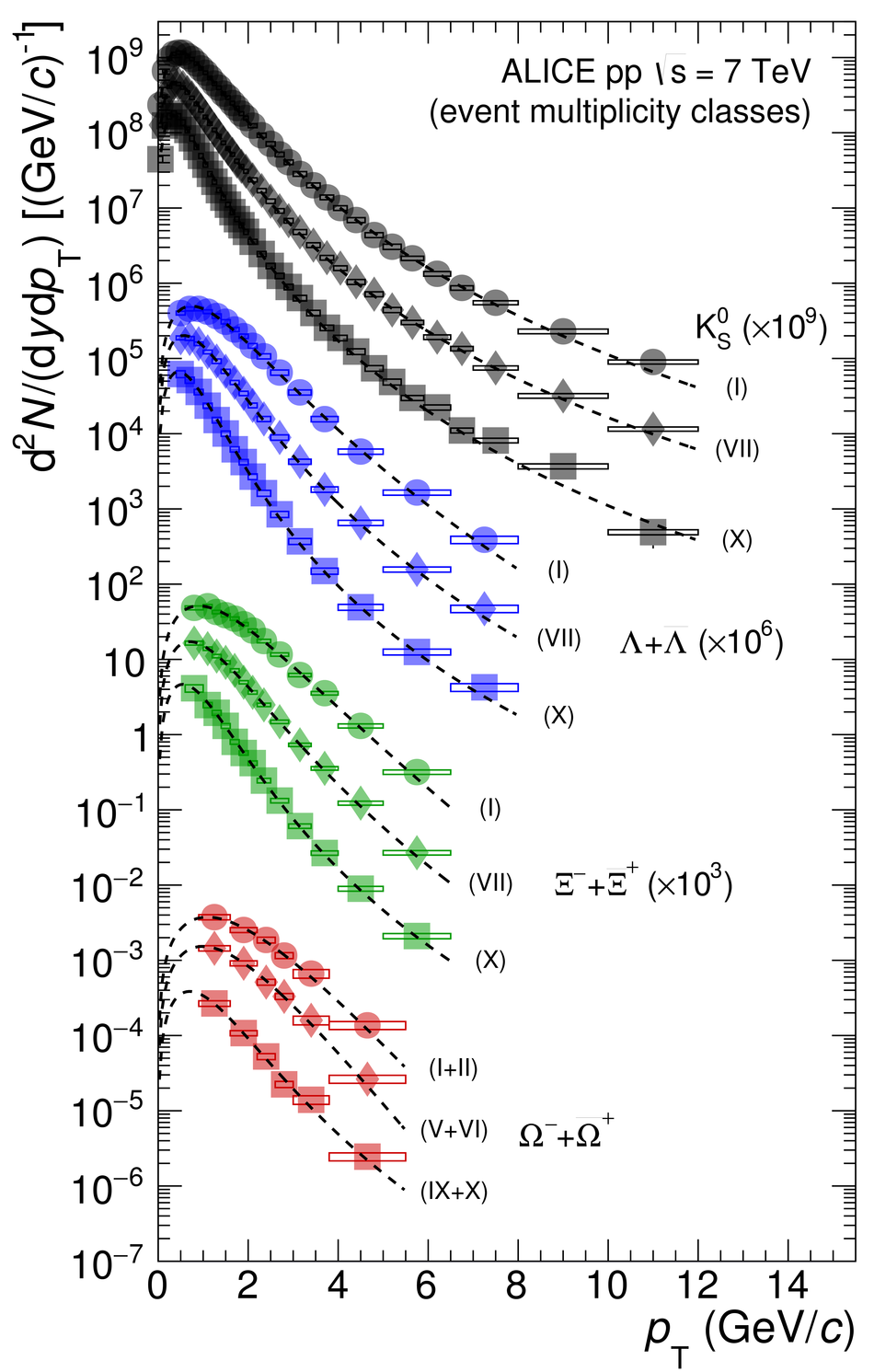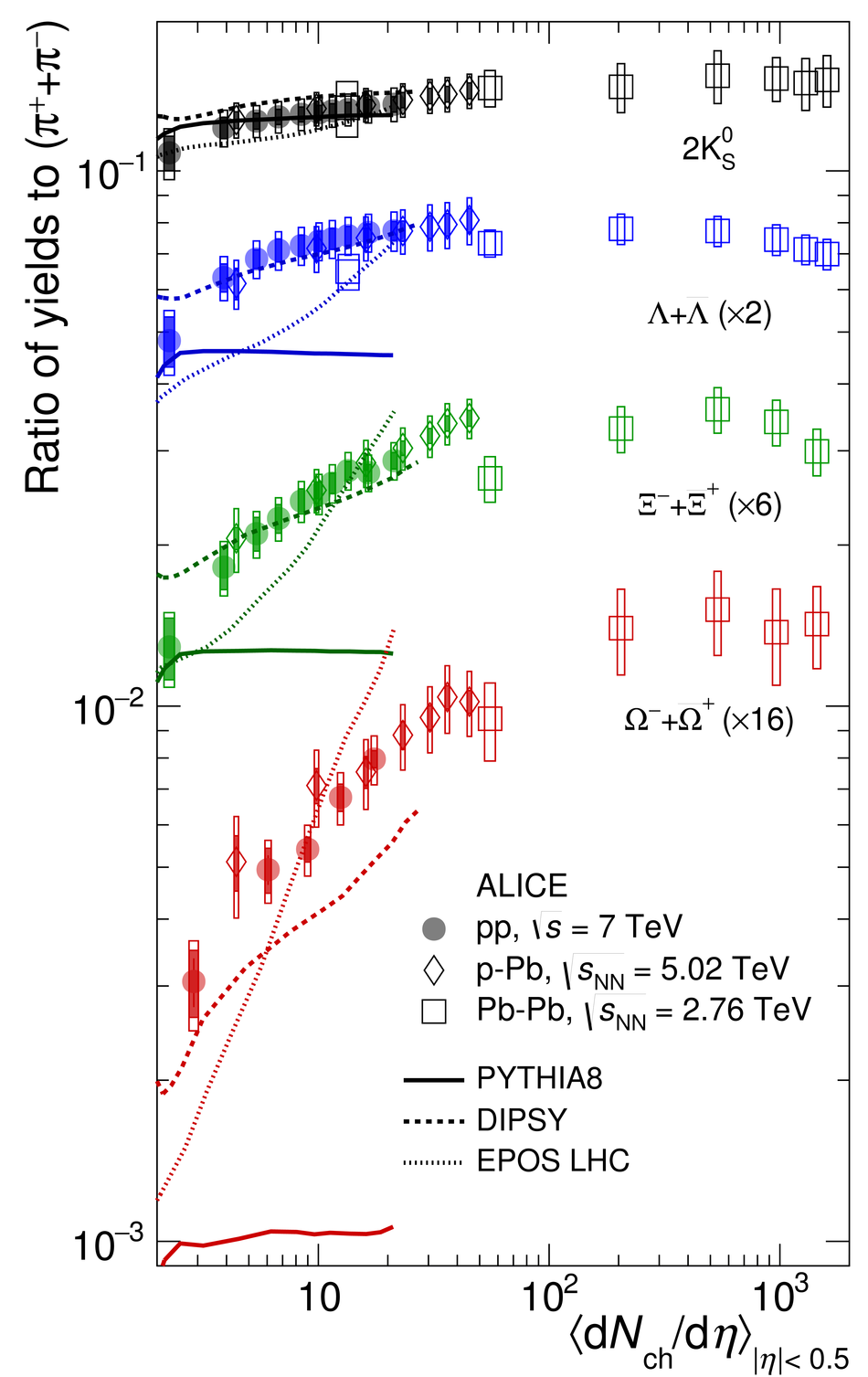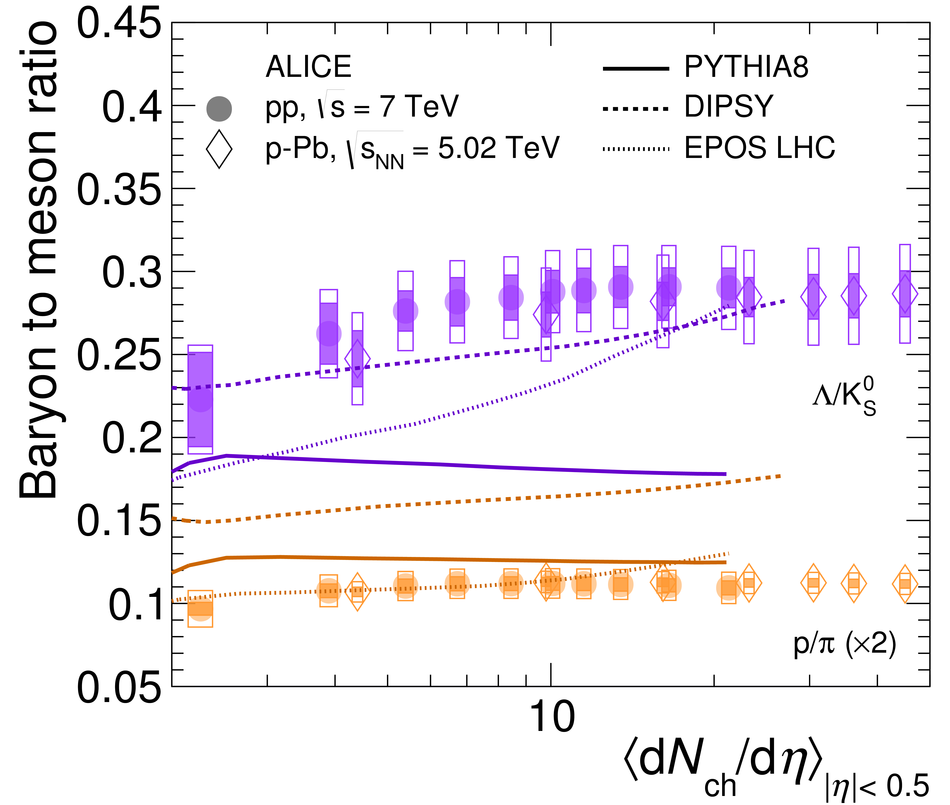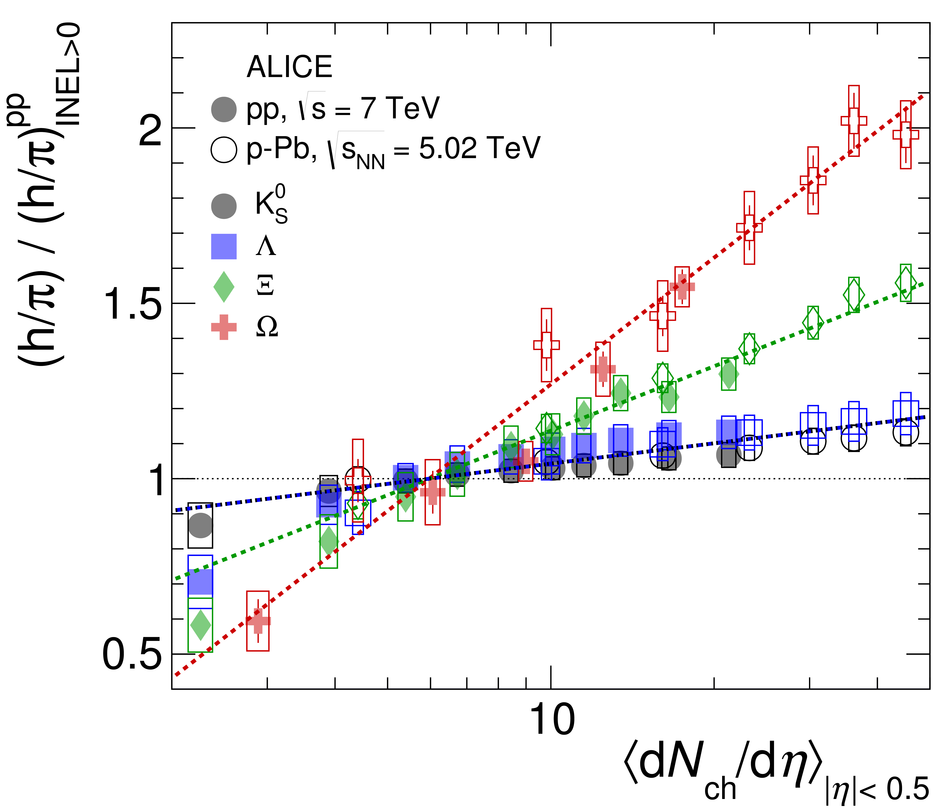At sufficiently high temperature and energy density, nuclear matter undergoes a transition to a phase in which quarks and gluons are not confined: the Quark-Gluon Plasma (QGP) [1]. Such an extreme state of strongly-interacting QCD (Quantum Chromo-Dynamics) matter is produced in the laboratory with high-energy collisions of heavy nuclei, where an enhanced production of strange hadrons is observed [2-6]. Strangeness enhancement, originally proposed as a signature of QGP formation in nuclear collisions [7], is more pronounced for multi-strange baryons. Several effects typical of heavy-ion phenomenology have been observed in high-multiplicity proton-proton (pp) collisions [8,9]. Yet, enhanced production of multi-strange particles has not been reported so far. Here we present the first observation of strangeness enhancement in high-multiplicity pp collisions. We find that the integrated yields of strange and multi-strange particles relative to pions increases significantly with the event charged-particle multiplicity. The measurements are in remarkable agreement with p-Pb collision results [10,11] indicating that the phenomenon is related to the final system created in the collision. In high-multiplicity events strangeness production reaches values similar to those observed in Pb-Pb collisions, where a QGP is formed.
Nature Physics 13 (2017) 535-539
HEP Data
e-Print: arXiv:1606.07424 | PDF | inSPIRE
CERN-EP-2016-153




